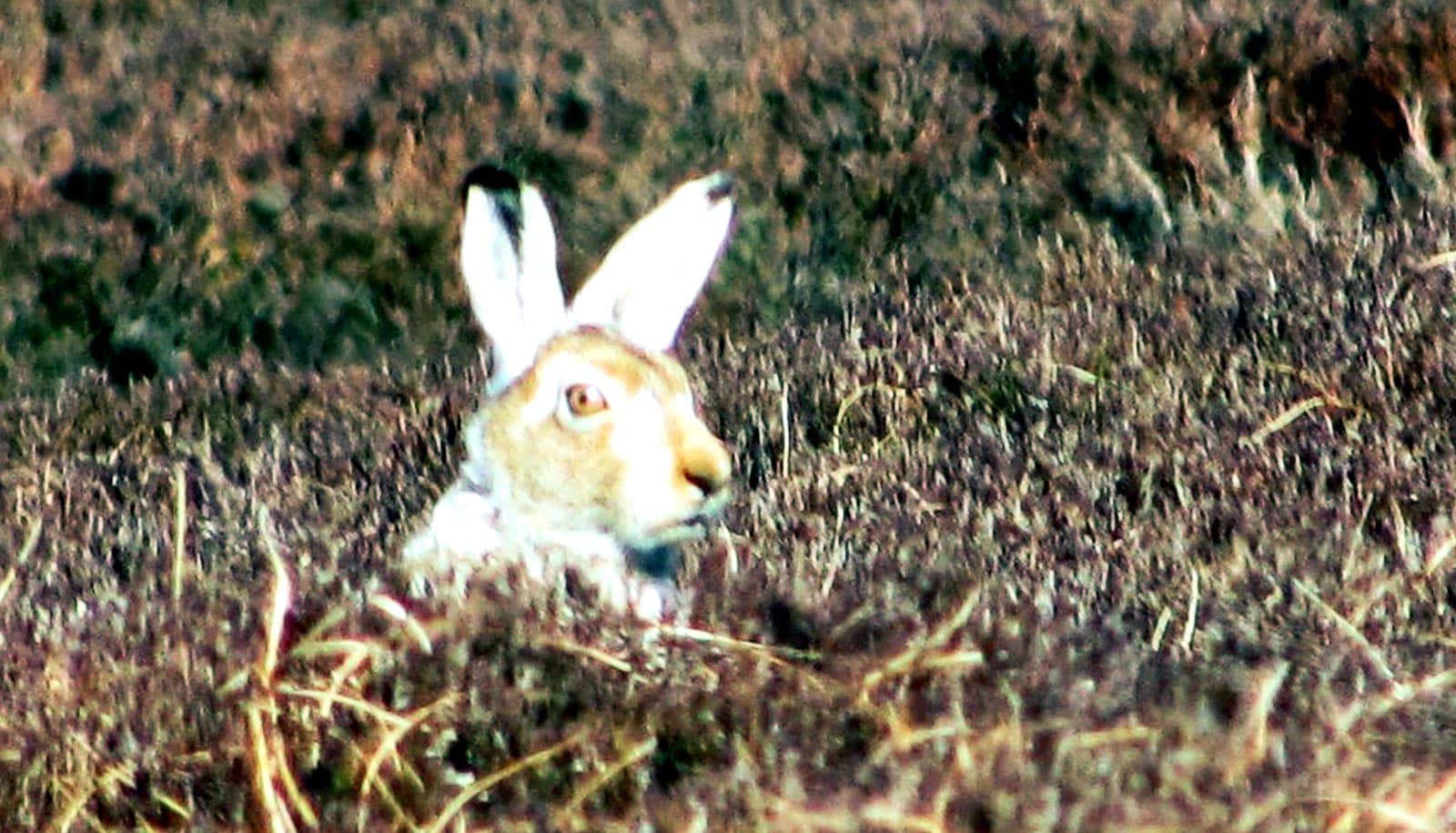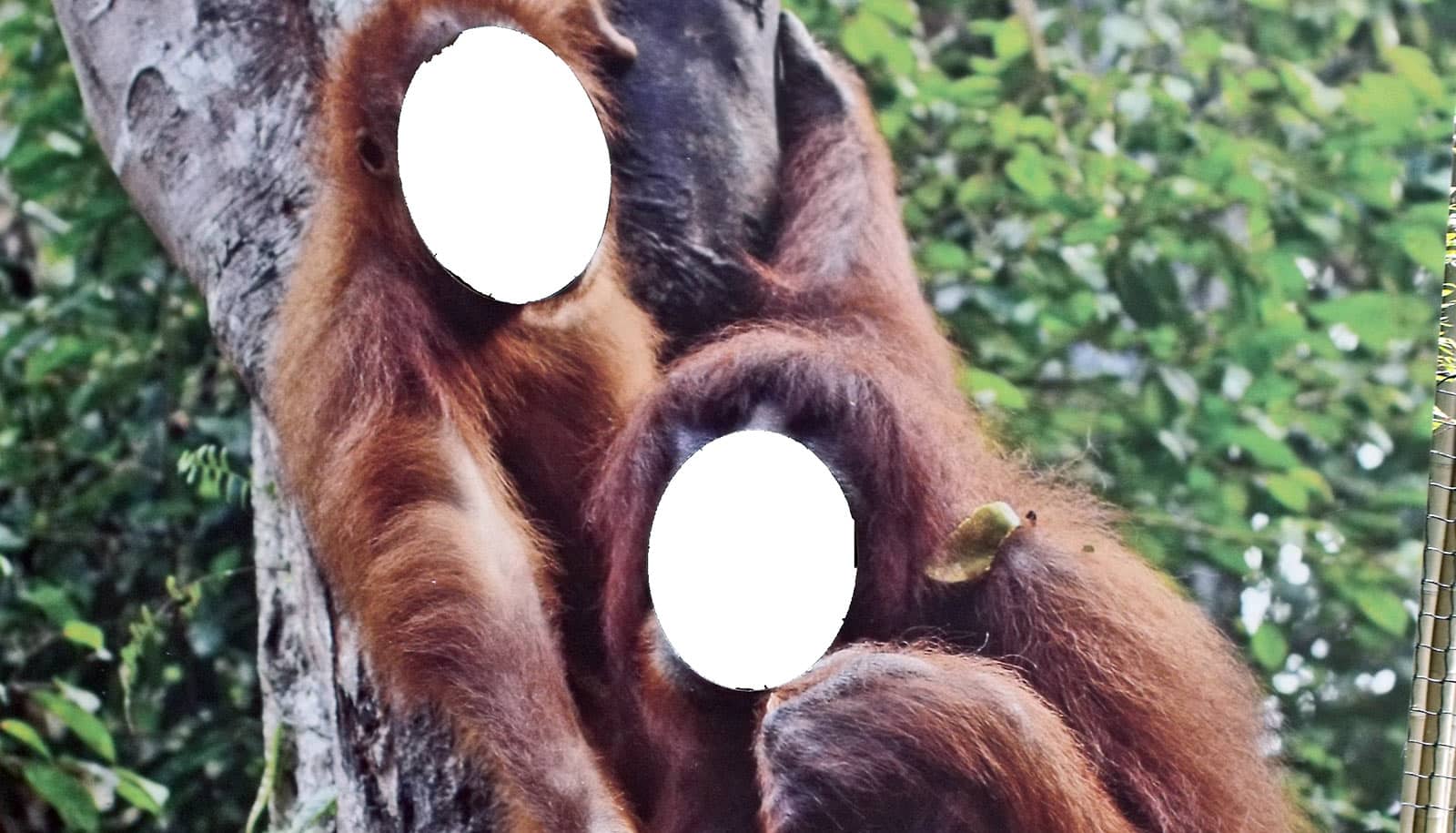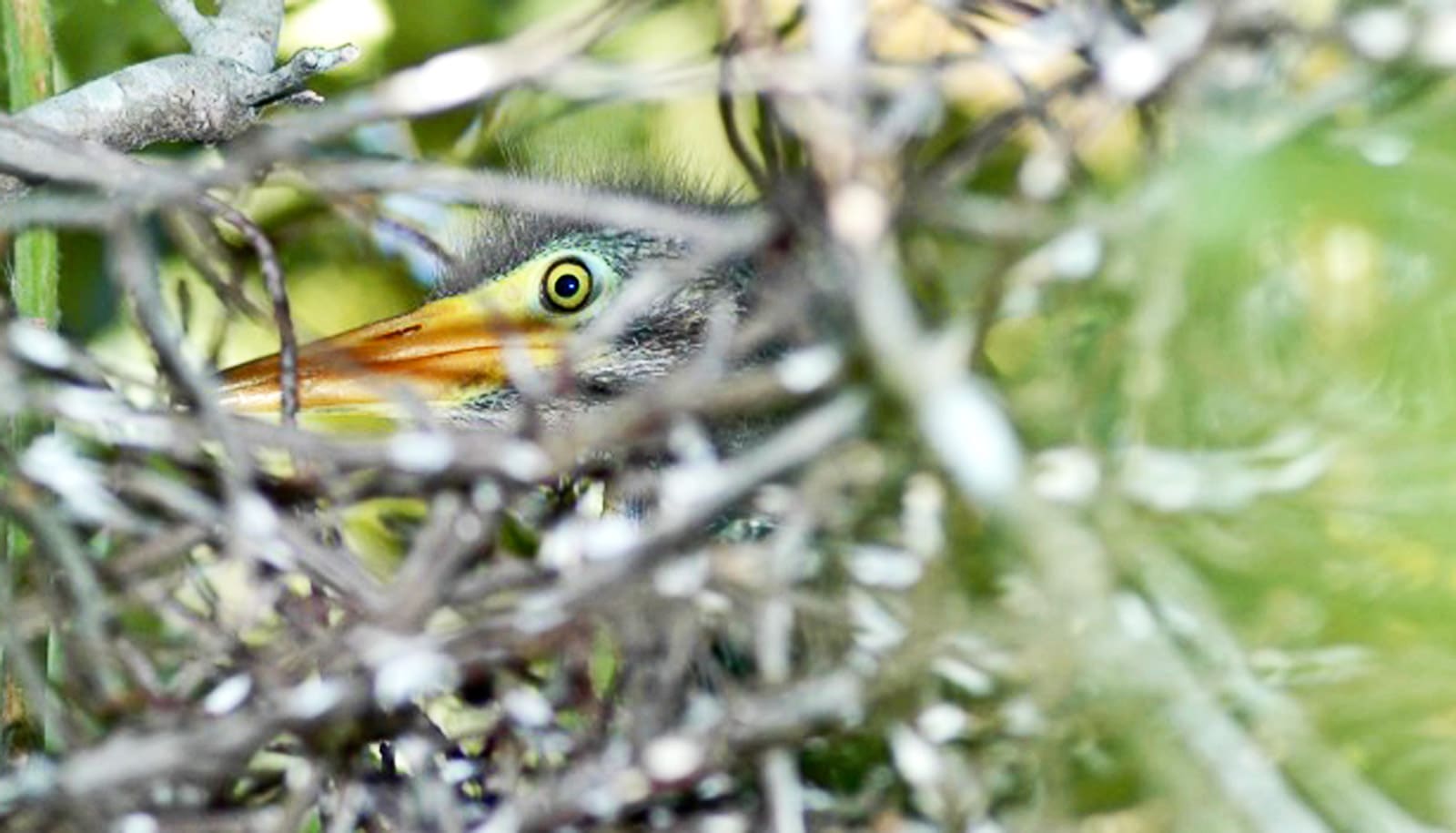Mountain hares in Scotland that rely on camouflage to escape predators are becoming increasing mismatched to their surroundings due to less snowy winters, a new study shows.
Mountain hares are one of several species that molt from a dark coat in summer to a white coat in winter to maintain camouflage against snowy landscapes. But due to climate change, the duration of snow cover is decreasing—creating a “mismatch” in seasonal camouflage that could expose the hares to predators.
“If we want species to persist in a rapidly changing world, we need to understand their responses to climate change.”
“Organisms have important life events that are timed to seasonal changes in the environment, like bird migration or hares molting to a white coat in winter,” says Sean Giery, postdoctoral research fellow at Penn State at an author of the paper.
“The ability to adapt this timing in the face of human induced climate change could determine whether the species can persist in our changing world.”
The researchers suggest that the observed lack of change in the timing of mountain hares’ molt—with more white hares on a snowless background—could eventually endanger the species’ survival in Scotland.
Key to the mountain hare study were published historical datasets by Adam Watson and John Flux that describe the seasonal molt of wild mountain hares in the Scottish Highlands during the 1950s and 1960s. These earlier studies represent the longest running systematic historical survey of molt timing in any species.
The research team returned to the Scottish Highlands to carry out surveys and record the pattern and timing of molt over multiple spring and fall seasons. This allowed them to compare the present and the historical timing of the hares’ color molts. Further, by employing statistical analysis, the researchers calculated the change in temperature and snow cover over the past 65 years within the study region.
“The camouflage mismatch of mountain hares is really surprising and worrying…”
Despite the dramatic change in climate, there was no evidence for an adaptive shift in molt timing in Scotland’s mountain hares—resulting in 35 more days per year when white hares are found on dark, snowless background since the 1950s.
“The camouflage mismatch of mountain hares is really surprising and worrying, and suggest that some wild animals can’t adapt quick enough to match the rate of climate change,” says Scott Newey, population ecologist at the James Hutton Institute and an author of the study.
“These are important findings because they indicate that some color molting species are not responding as we’d expect based on what we’ve seen in other systems,” says coauthor L. Scott Mills, professor of wildlife biology at the University of Montana.
The reason that timing of mountain hare molt has remained relatively static is not clear, but the researchers hypothesize that it might be due to the reduction in the number and diversity of predators associated with land management in large parts of the study area.
“Our research on another color molting species—snowshoe hares in Montana—showed that mismatched hares experience much higher predation rates,” says lead author Marketa Zimova, postdoctoral research fellow at the University of Michigan’s Institute for Global Change Biology.
Unless snowshoe hare molt timing can adaptively track the reductions in snow cover, such high mortality costs of mismatch in that system could lead to severe population declines by the end of the century.
“The climate in Scotland had changed so much since the 1950s, we expected that for mountain hares to persist there they must’ve tracked the seasonal change. They didn’t. The problem was that we had assumed a fitness cost to mismatch in these mountain hares,” says Giery.
“It took us a while to realize that what we were seeing—steadily increasing camouflage mismatch in mountain hares—might be the result of an ecosystem subject to climate change, and a history of predator control,” Giery says. “Without many predators, fitness costs of camouflage mismatch might be minimal.”
Although the costs of mismatch to mountain hares may not currently be drastic, the researchers caution that additional anthropogenic change could eventually trigger the reemergence of mismatch costs. They stress that recent climate change has already subjected many wild populations to large changes in environmental conditions, and failure of a species to track these changes will ultimately result in decline and extinction.
“If we want species to persist in a rapidly changing world, we need to understand their responses to climate change,” says Zimova. “This challenge includes considering a suite of anthropogenic changes and how they interact.”
The study appears in the journal Proceedings of the Royal Society B. Additional researchers from the University of Montana and Scotland’s Rural College contributed to the work.
Source: Penn State



